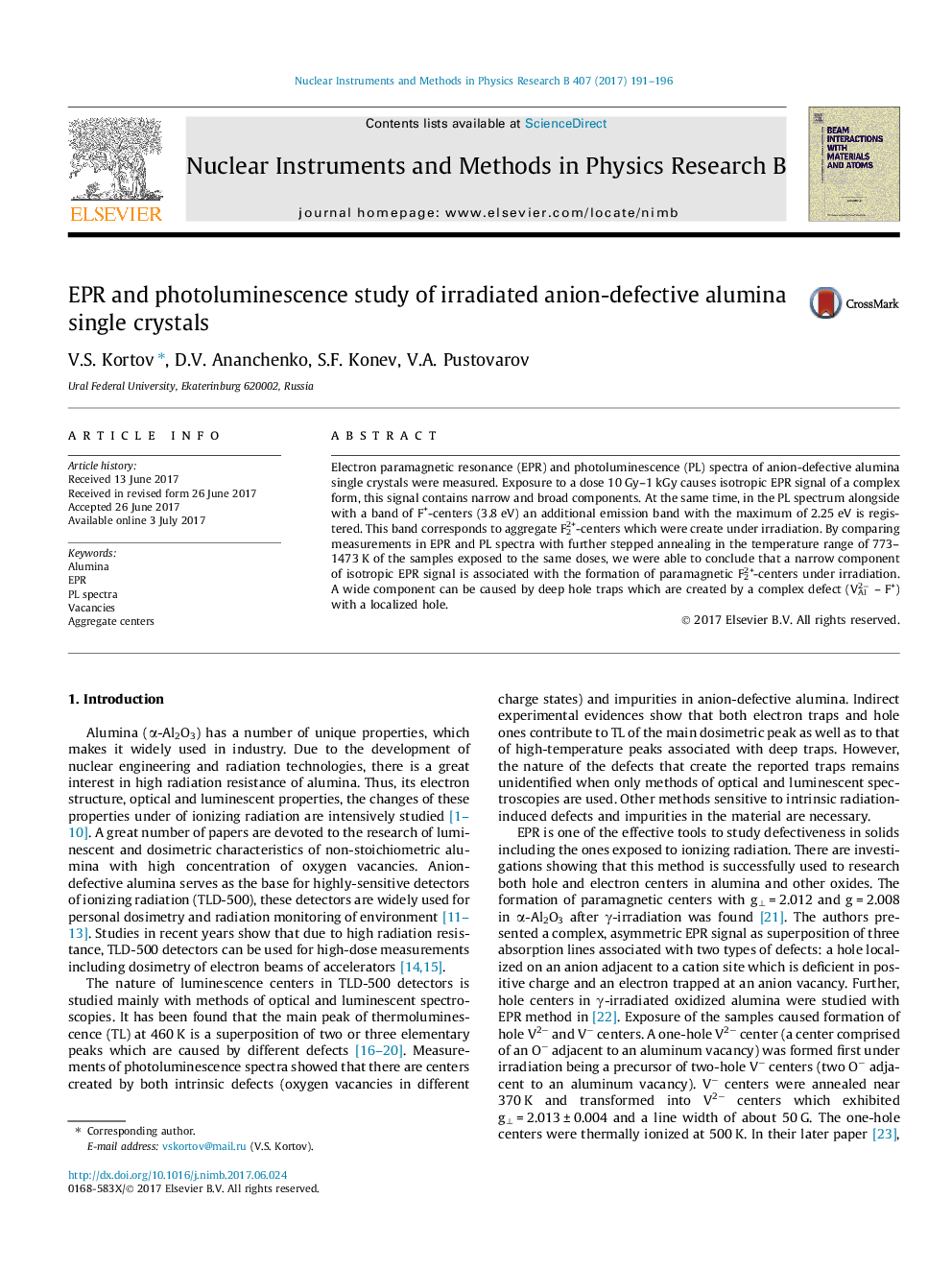| Article ID | Journal | Published Year | Pages | File Type |
|---|---|---|---|---|
| 5467527 | Nuclear Instruments and Methods in Physics Research Section B: Beam Interactions with Materials and Atoms | 2017 | 6 Pages |
Abstract
Electron paramagnetic resonance (EPR) and photoluminescence (PL) spectra of anion-defective alumina single crystals were measured. Exposure to a dose 10Â Gy-1Â kGy causes isotropic EPR signal of a complex form, this signal contains narrow and broad components. At the same time, in the PL spectrum alongside with a band of F+-centers (3.8Â eV) an additional emission band with the maximum of 2.25Â eV is registered. This band corresponds to aggregate F22+-centers which were create under irradiation. By comparing measurements in EPR and PL spectra with further stepped annealing in the temperature range of 773-1473Â K of the samples exposed to the same doses, we were able to conclude that a narrow component of isotropic EPR signal is associated with the formation of paramagnetic F22+-centers under irradiation. A wide component can be caused by deep hole traps which are created by a complex defect (VAl2â - F+) with a localized hole.
Related Topics
Physical Sciences and Engineering
Materials Science
Surfaces, Coatings and Films
Authors
V.S. Kortov, D.V. Ananchenko, S.F. Konev, V.A. Pustovarov,
